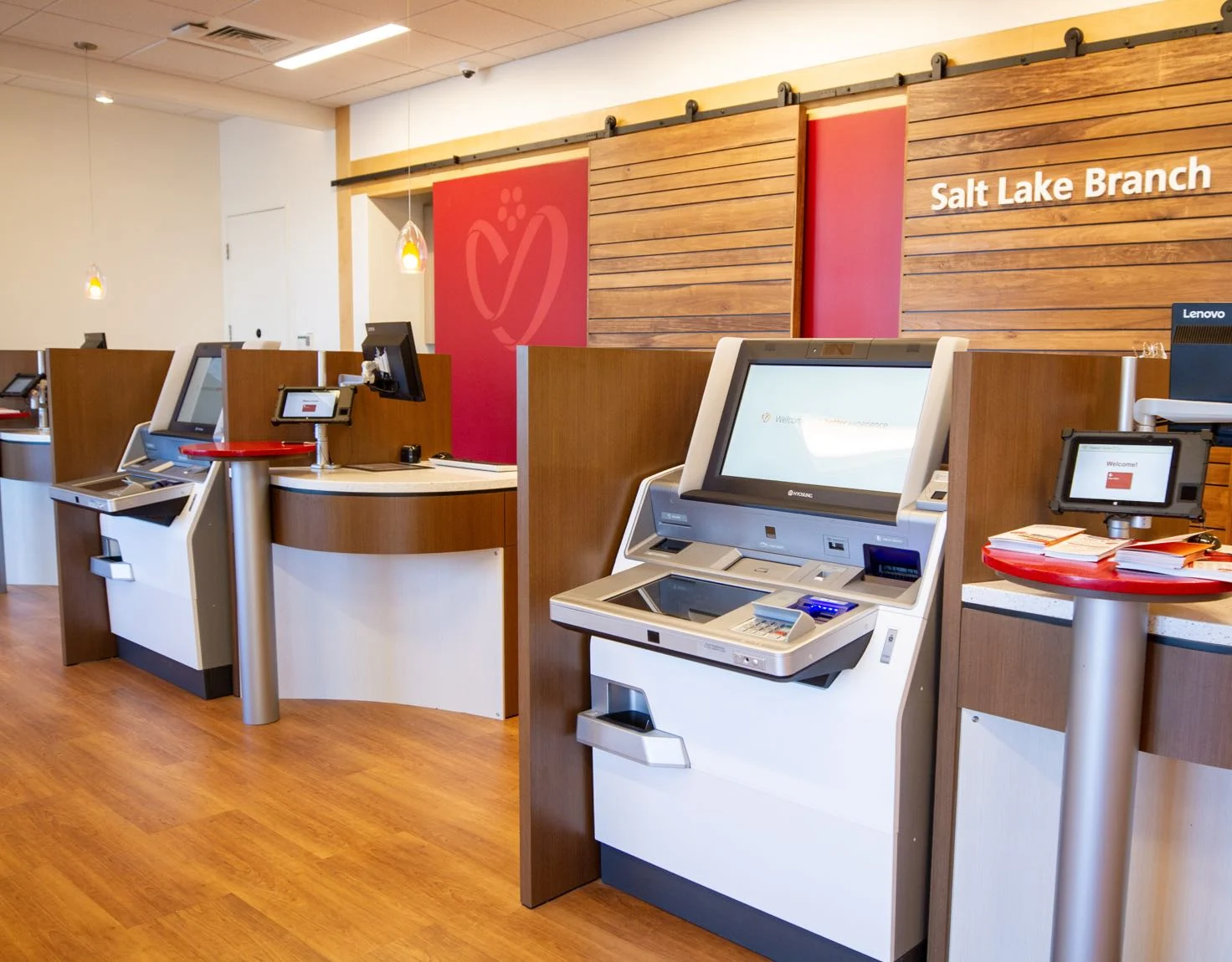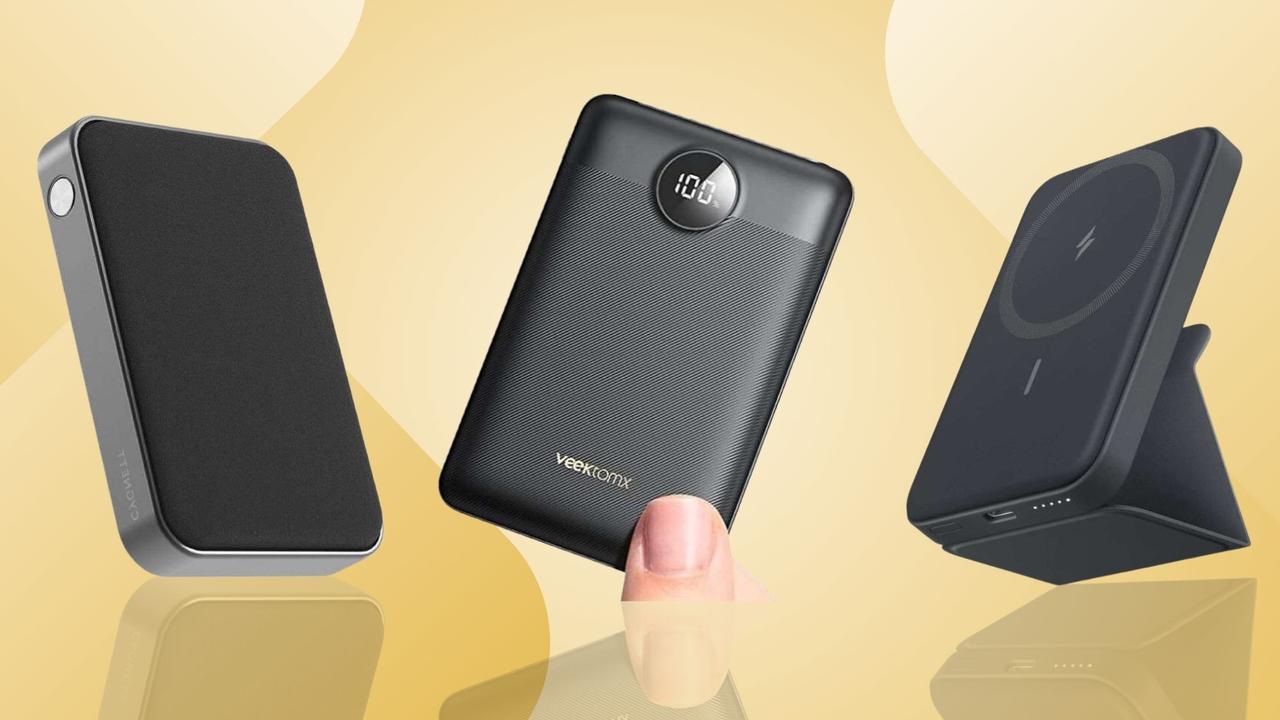Introduction
Welcome to the world of modern banking, where technology continues to revolutionize the way financial transactions are conducted. With the increasing demand for convenience and efficiency, banks are constantly seeking innovative solutions to meet the evolving needs of their customers. One such solution that has gained prominence in recent years is ITM, which stands for Interactive Teller Machine.
Gone are the days when customers had to wait in long queues at the bank for basic transactions. ITM combines the convenience of an ATM with the personalized service of a teller, allowing customers to interact with a real bank employee through a video chat service. This technology has transformed the traditional banking experience and paved the way for a more convenient and customer-centric approach.
But what exactly does ITM stand for in banking? ITM refers to the integration of video and audio technology into a banking terminal, which enables customers to conduct a wide range of transactions remotely. Whether it’s making deposits, withdrawing cash, transferring funds, or seeking assistance with account inquiries, ITM provides customers with a secure and interactive way to carry out their banking activities from the comfort of their own homes or from convenient locations.
The advent of ITM has brought numerous benefits to both banks and customers alike. For banks, it offers cost-saving advantages by reducing the need for physical branches and tellers while improving operational efficiency. Customers, on the other hand, enjoy the convenience of extended banking hours, shorter waiting times, and personalized assistance from trained professionals.
Definition of ITM in Banking
In the world of banking, ITM stands for Interactive Teller Machine. It is a technology-driven solution that combines the convenience of an ATM (Automated Teller Machine) with the personalized service of a traditional teller. With ITM, customers have the ability to interact with a live bank employee through video and audio chat, enabling them to carry out a wide range of banking transactions remotely.
The primary purpose of the ITM is to provide customers with a more convenient and efficient banking experience. By incorporating video and audio capabilities into a banking terminal, customers can conduct various transactions such as cash deposits, cash withdrawals, account transfers, loan payments, and account inquiries without needing to physically visit a branch location. This technology has become especially valuable in situations where customers are unable to access a physical branch or during extended banking hours when tellers may not be available in person.
The ITM technology typically consists of a touch screen display, a camera for video chat, a microphone for audio communication, and the necessary software to facilitate secure transactions. When a customer accesses an ITM, they are greeted by a bank employee via video chat, who can guide them through the transaction process and provide any necessary assistance. The customer can then interact with the employee in real-time, just as they would during an in-person visit to a bank branch.
The use of ITM brings numerous benefits to both banks and customers. For banks, ITM technology allows them to optimize their operational efficiency by reducing the need for physical branches and the associated overhead costs. It also enhances customer service by enabling trained bank employees to assist customers remotely. Additionally, ITMs can be strategically placed in locations with high customer traffic, providing added convenience to customers who can carry out their banking activities nearer to their daily routines.
For customers, ITM offers a host of advantages. They no longer need to wait in long queues or adhere to limited banking hours. The ability to conduct transactions remotely provides greater flexibility and convenience, allowing customers to manage their finances at their own pace and convenience. Furthermore, customers who have mobility issues or limited transportation access can easily access banking services without leaving their homes.
Benefits of ITM in Banking
The implementation of ITM technology in the banking sector has brought about several notable benefits for both financial institutions and their customers. Let’s explore some of the key advantages that ITM offers:
- Convenience and Accessibility: ITM enables customers to carry out a range of banking transactions at their convenience, without the need for physical branch visits. This accessibility is particularly beneficial for customers located in remote areas or with limited mobility, as they can easily access banking services from their homes or nearby locations.
- Extended Banking Hours: Traditional bank branches have limited operating hours, but ITM allows customers to conduct transactions outside of regular banking hours. This is particularly advantageous for individuals who work long hours or have busy schedules, as they can access banking services early in the morning, late at night, or even on weekends and holidays.
- Enhanced Personalized Service: With ITM, customers have the opportunity to interact with a live bank employee via video chat. This personalized service ensures that customers can receive real-time assistance for complex transactions or inquiries, providing a human touch that is often lacking in traditional automated systems.
- Reduced Waiting Times: Long queues and extended waiting times at bank branches can be frustrating for customers. ITM technology mitigates this issue by allowing customers to quickly connect with a bank teller and complete their transactions without the need to physically wait in line. This significantly improves overall customer experience and enhances customer satisfaction.
- Cost Savings for Banks: Implementing ITM technology can lead to significant cost savings for banks. By reducing the need for physical branches and teller staff, banks can streamline their operations and lower overhead costs. This cost efficiency can enable financial institutions to invest in other areas of their business or offer more competitive products and services to customers.
- Improved Transaction Security: ITM technology prioritizes security and protects customers’ sensitive information during transactions. The integration of advanced encryption protocols and biometric authentication measures ensures that customer data remains secure and protected from potential threats or fraudulent activities.
Overall, the adoption of ITM technology in banking brings convenience, accessibility, and cost savings for both financial institutions and their customers. By leveraging this technology, banks can enhance customer service, extend their reach, and adapt to the evolving needs of a digital-first generation.
Applications of ITM in Banking
ITM technology has revolutionized the way customers interact with banks, offering a wide range of applications that enhance convenience, efficiency, and customer satisfaction. Let’s take a look at some of the key applications of ITM in the banking industry:
- Basic Transactions: ITM allows customers to perform basic banking transactions such as cash deposits and cash withdrawals. With the assistance of a live teller via video chat, customers can complete these transactions easily and securely, without the need for a physical branch visit.
- Account Inquiries and Updates: Customers can use ITM to inquire about their account balances, transaction history, and update personal information. This real-time interaction with a bank employee ensures accurate and up-to-date information, providing customers with a seamless experience.
- Account Opening and Closing: In certain cases, customers can utilize ITM to open or close bank accounts. The video chat feature allows bank employees to guide customers through the necessary steps and provide assistance throughout the process, enhancing efficiency and minimizing errors.
- Loan Applications and Payments: ITM technology enables customers to initiate loan applications and make loan payments. Through video chat, customers can discuss their loan requirements with bank employees, submit the necessary documentation, and complete the loan application process remotely.
- Financial Advice and Consultations: Customers can seek financial advice and consultations through ITM. This feature allows individuals to discuss their financial goals, investment options, and receive personalized guidance from trained bank professionals without the need for a face-to-face meeting.
- Foreign Exchange Services: ITM can facilitate foreign currency exchange transactions for customers. With the assistance of a bank teller via video chat, customers can exchange currencies at competitive rates, making it convenient for those traveling abroad or engaging in international business transactions.
- Assistance for Special Needs Customers: ITM technology caters to customers with special needs, such as those who are hearing-impaired or have limited mobility. The interactive video chat feature provides these customers with equal access to banking services, ensuring inclusivity and a positive experience.
These applications of ITM technology in banking demonstrate its versatility and value in meeting the diverse needs of customers. From basic transactions to complex financial interactions, ITM has expanded the horizons of customer-bank engagement, providing a seamless and efficient banking experience.
Challenges of Implementing ITM in Banking
While ITM technology offers numerous benefits, its implementation in the banking industry is not without challenges. Financial institutions face several hurdles when adopting ITM solutions. Let’s explore some of the key challenges of implementing ITM in banking:
- Technological Infrastructure: One of the primary challenges is ensuring that banks have the necessary technological infrastructure to support ITM services. This includes robust internet connectivity, high-quality video and audio capabilities, and secure data transmission to protect customer information. Upgrading existing systems and investing in new hardware and software can be a significant undertaking.
- Training and Support: Properly training bank staff to effectively use and support ITM technology is crucial. Bank employees must be proficient in handling customer queries, executing transactions, and troubleshooting technical issues that may arise during the ITM process. Adequate training and ongoing support are essential to ensure a seamless customer experience.
- Customer Adoption: Encouraging customers to embrace ITM technology may pose a challenge. Some customers may be hesitant to try new banking methods and prefer traditional in-person transactions. Educating customers about the benefits and security of ITM, as well as providing user-friendly interfaces and clear instructions, can help promote customer adoption and acceptance of this innovative banking solution.
- Privacy and Security: Maintaining the privacy and security of customer data is crucial in the implementation of ITM technology. Banks need to invest in robust cybersecurity measures to protect customer information from data breaches or unauthorized access. Implementing industry-standard encryption protocols and deploying intrusion detection systems are critical steps in safeguarding customer privacy.
- Integration with Existing Systems: ITM technology needs to seamlessly integrate with a bank’s existing systems and processes. This can be challenging, particularly for banks with complex legacy systems. Ensuring smooth interoperability without disrupting other banking services requires careful planning, testing, and coordination with various stakeholders within the organization.
- Costs and Return on Investment: Implementing ITM technology involves significant upfront costs, including hardware, software, training, and ongoing maintenance. Financial institutions need to carefully evaluate the return on investment to justify these expenses. While ITM can deliver long-term cost savings, such as reduced branch infrastructure and personnel costs, the initial investment may require careful financial planning and analysis.
Overcoming these challenges requires a strategic and holistic approach. Financial institutions must invest in the necessary resources, including technology, training, and security, while also educating and incentivizing customers to adopt ITM services. By addressing these challenges effectively, banks can embrace the potential benefits of ITM technology and deliver an enhanced banking experience to their customers.
Future of ITM in Banking
The future of ITM in banking is promising, as financial institutions continue to embrace digital transformation and prioritize customer-centric solutions. Here are some key trends and developments that indicate the bright future of ITM in banking:
- Advancements in Technology: ITM technology is expected to evolve and incorporate more advanced features to enhance the customer experience. This includes improved video and audio quality, augmented reality functionalities, and artificial intelligence-powered virtual assistants. These advancements will make the interaction between customers and bank employees even more seamless and intuitive.
- Integration with Mobile Banking: The integration between ITM and mobile banking applications is expected to become more seamless and user-friendly. Customers will be able to initiate transactions through their mobile devices and seamlessly transfer to an ITM session if they require more personalized assistance. This integration will provide a unified and convenient banking experience for customers.
- Expansion of Services: ITM technology will likely expand to offer a wider range of banking services. This includes more complex financial advisory services, insurance purchases, credit card applications, and investment management. The ability to access these services through ITM channels will offer customers greater convenience, fostering a deeper and more comprehensive relationship between banks and their clients.
- Increased Security Measures: As cybersecurity threats become more sophisticated, ITM technology will continue to prioritize the security of customer data. Financial institutions will invest in advanced encryption protocols, biometric authentication, and real-time fraud detection systems to ensure the highest level of security. This will further enhance customer trust in ITM services and drive adoption.
- Global Expansion: ITM technology is not only gaining traction in developed countries but also expanding to emerging markets where physical branch infrastructure is limited. The ability to provide convenient, secure, and personalized banking services through ITM platforms will empower financial inclusion and reach a wider customer base.
- Integration with Artificial Intelligence: The integration of ITM technology with artificial intelligence (AI) holds immense potential. AI-powered chatbots and virtual assistants can handle basic customer inquiries, thereby freeing up human employees to focus on more complex tasks. This integration will improve efficiency, reduce waiting times, and enable banks to provide real-time assistance to customers.
With these advancements, ITM is poised to become an integral part of the future banking landscape. It will continue to redefine how customers interact with their banks, offering convenience, personalized service, and efficient transactions. As financial institutions embrace digital transformation and the need for innovation, ITM will play a vital role in driving the industry forward.
Conclusion
ITM technology has revolutionized the banking industry, providing customers with a convenient and personalized banking experience. The ability to interact with a live bank employee through video chat has transformed the way basic transactions, account inquiries, and other banking activities are conducted. By combining the convenience of an ATM with the human touch of a teller, ITM has offered numerous benefits to both banks and their customers.
We have explored the definition of ITM in banking and its various applications, including basic transactions, account management, loan applications, and financial consultations. Through ITM, banks have extended their operating hours, reduced waiting times, and enhanced customer service. Customers, on the other hand, enjoy the flexibility of accessing banking services remotely, receiving personalized assistance, and saving time and effort by avoiding physical branch visits.
While the implementation of ITM technology presents challenges such as technological infrastructure requirements, training and support, customer adoption, and security concerns, financial institutions are actively addressing these issues to ensure a seamless and secure experience for users.
Looking to the future, ITM in banking is poised for further growth and advancements. Technological developments, such as improved video and audio quality, integration with mobile banking, and the utilization of artificial intelligence, will revolutionize the ITM experience. Additionally, expanding services, increased security measures, global expansion, and integration with emerging technologies will further solidify the role of ITM in the future of banking.
It is evident that ITM technology has become an essential tool for banks seeking to provide convenient, efficient, and customer-friendly services. As financial institutions continue to embrace digital transformation, ITM will play a crucial role in redefining the banking landscape, enhancing customer experiences, and driving industry innovation.

























